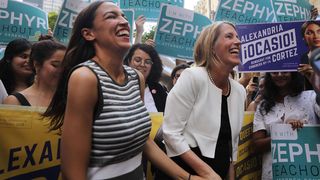Year of the Woman
The 2018 midterm elections are a record-breaking year for women in American politics, with more women running for US Congress and state-wide office than any previous election.
This year’s wave of women candidates is notable beyond its sheer size. It is also incredibly diverse. A greater number of women of colour, Indigenous women, and those from LGBTQ or religious-minority communities have announced their candidacies for elected office, increasing the visibility of these sometimes-marginalised segments of the American population.
The surge in women candidates has so-far been accompanied by promising victories in many primary battles and special elections. In the context of highly-publicised discussions of gender inequality and sexual harassment, many commentators have drawn parallels between the current political climate and 1992’s Year of the Woman, which led to an unprecedented number of women entering the US House of Representatives in a single election.
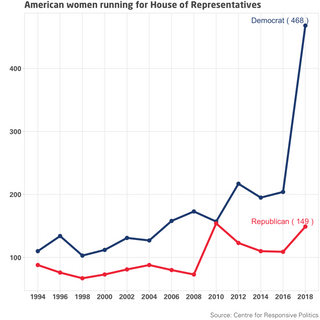
Women’s political participation in the United States
As with most other democracies, like Australia, women are heavily under-represented in American political office. They are only 20 per cent of the 535 total members of US Congress, including 23 senators and 84 representatives. Eleven US states lack a single woman in their delegation to the national legislature altogether.
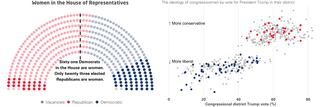
While the number of women candidates contesting races up- and down-the-ballot is a promising sign for increased female representation in American politics, November’s midterm elections will still pose an uphill battle. Many women who have secured their party’s nomination will go on to face difficult contests against entrenched incumbents or in districts that heavily favour the opposing party.
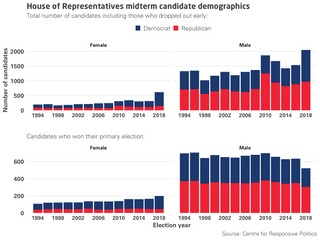
Women and the Democratic Party
Despite the record-number of women running from both sides of politics, the majority of this year’s momentum is coming from within the Democratic Party. Already, there are almost three times as many Democratic women serving in Congress compared to their Republican counterparts, and November’s midterm elections are likely to exacerbate this disparity.
In early 2018, the number of Democratic women running for the House of Representatives had increased by 146 per cent from the same point in 2016, while for Republican women this increase was only 35 per cent. Not only are more Democratic women running, they are also having greater success: vastly outperforming their Republican counterparts in securing party nominations in primaries.
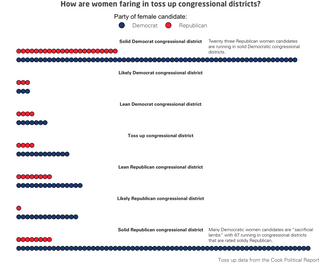
Races to watch
Senate
- Both the Republican and Democratic parties have nominated women to contest Senator Jeff Flake’s open Arizona seat, meaning that either Kyrsten Sinema (D) or Martha McSally (R) will be the first woman to be elected to the Senate from the Grand Canyon State.
- Incumbent Senators Heidi Heitkamp (D-North Dakota) and Claire McCaskill (D-Missouri) are facing tough re-election bids in states that expressed strong support for Donald Trump in the 2016 presidential election.

House
- Progressive Democratic candidates Alexandria Ocasio-Cortez (NY-14) and Ayanna Pressley (MA-07) are almost guaranteed a direct route to US Congress from their upset victories over long-term incumbents. Ocasio-Cortez is set to be the youngest woman elected to Congress, while Pressley is poised to be the first black woman Massachusetts sends to Congress.
Gubernatorial
- Georgia’s Stacey Abrams is the first African-American woman to win a major party nomination for governor, while Idaho’s Paulette Jordan is the first Native American woman. Vermont Democrat Christine Hallquist is the nation’s first openly transgender candidate for governor.
State-wide
- Michigan Democrats put forward a nearly all-female ticket for every state-wide office on the ballot this November: governor, US senator, attorney general and secretary of state. Gretchen Whitmer, a former state House minority leader who secured the Democratic nomination for governor, did however select a male running mate for lieutenant governor – Garlin Gilchrist II.





